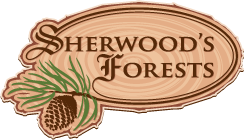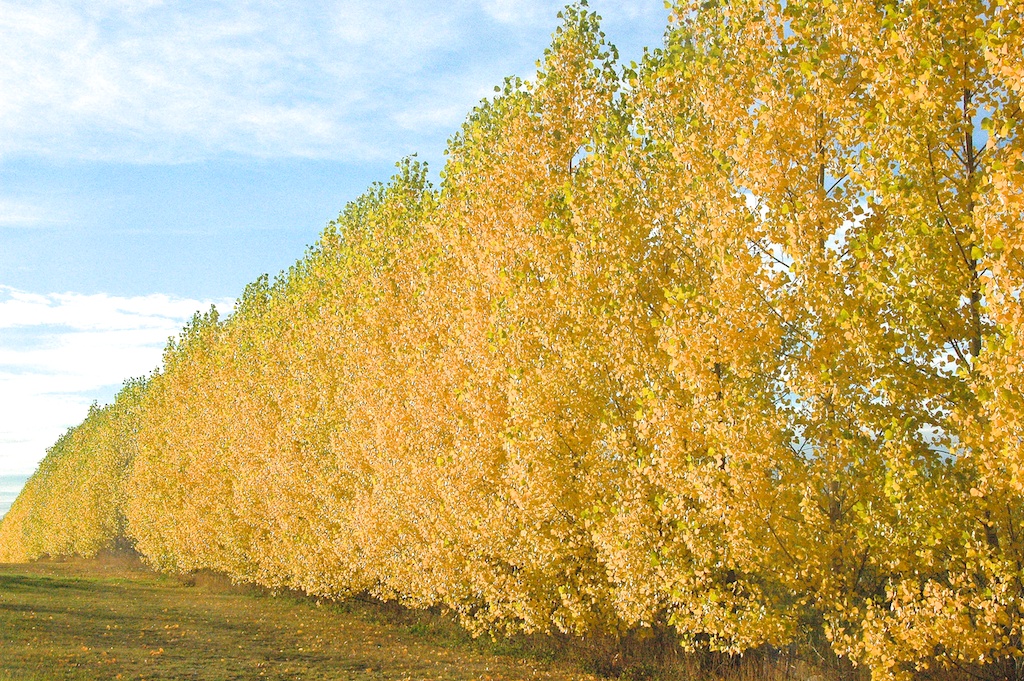
The edge were tree meets field creates a haven for all sorts of critters.
Our Collection of Forests
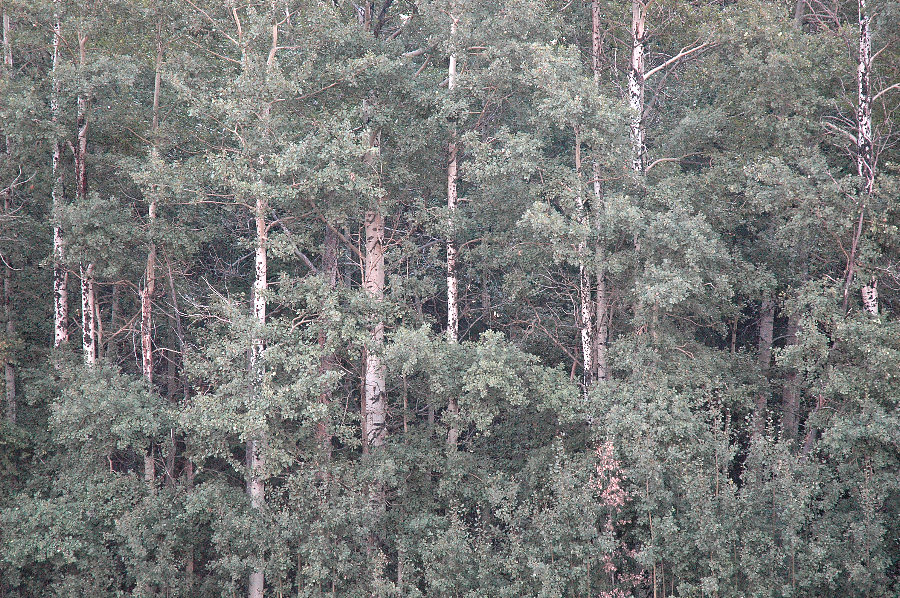
The "Aspen Wall." East end of my main field.
Often, when people look at tree covered land, they think "forest, bushland, pucky brush." We say of those who live away from the urban sprawl that they live "out in the sticks." The poplar was cleared by the first settlers, with enormous effort, so that crops could be raised. Many of my students (the tree farm is another 5 years from making me a living...) can only see "bush" (anything with deciduous leaves) and "pines" (anything with needles)
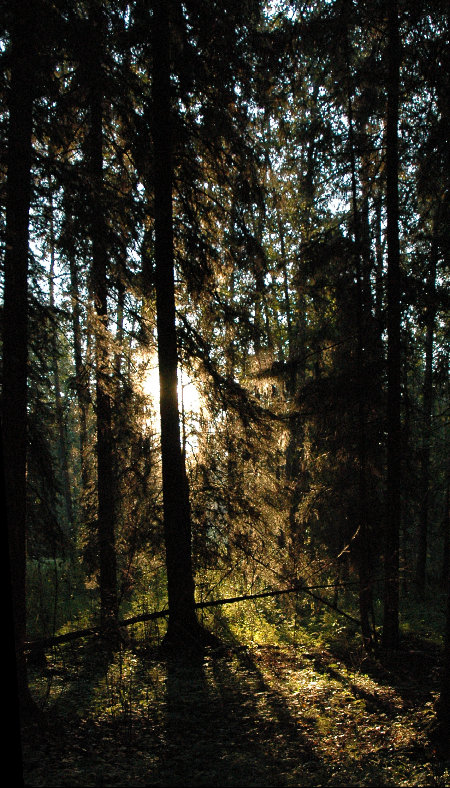
Spruce don't let a lot of light get through the crown.
I'm learning to see woodland as a far more interesting tapestry.
It's not all the same. At present we have 15 acres in woods. Yet in that 15
acres we have six distinct types of forest.
A forest is more than trees. Even our northern forests have layers in them. Except for mature spruce forests, there is a layer of shrubs under the trees, and a layer of herbaceous (no woody bits -- grasses, wild flowers, 'weeds') under the shrubs. These interact in complex ways.
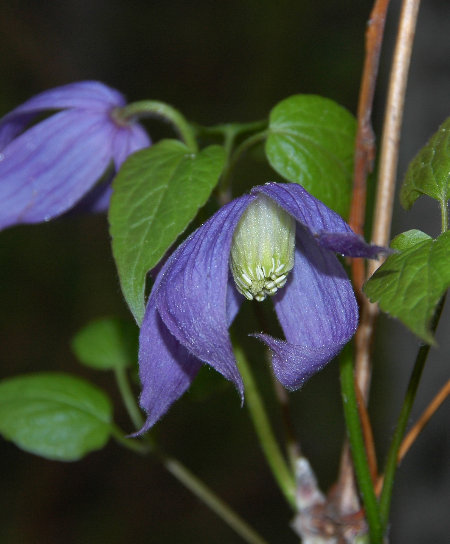
Our second year here I noticed this beauty. I've got a colony of about 15 specimens dotted here and there through a patch 50 x 100 feet.
There are further complications with the interactions with wildlife.
Some people chat blithely about the 'balance of nature'. If there is a balance, it is shaky. Balance implies sameness from year to year. It doesn't seem to work that way. Oh, the trees are here year after year, but the forest puts on a new wardrobe each spring, as if following fashion trends out of Vogue or Cosmopolitan.
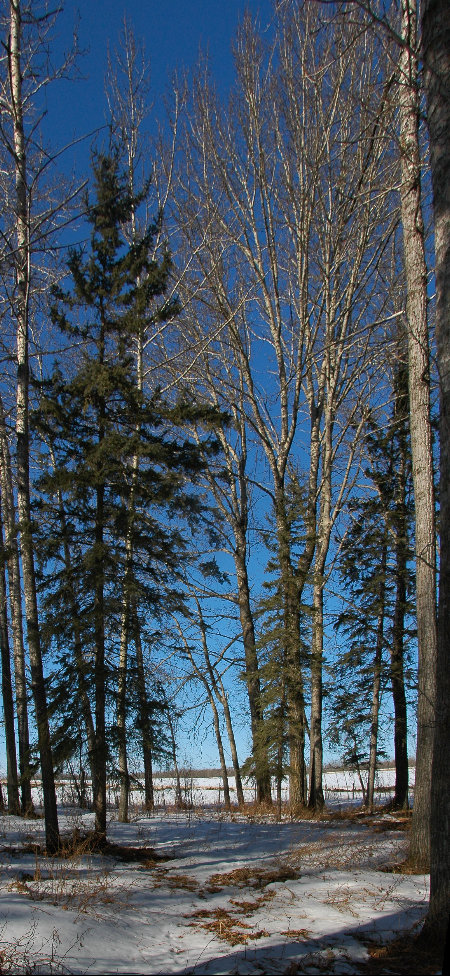
Transition Forest. The poplar die. Spruce spring up in their place.
Our first year, the dogs would come in covered in burdock burrs. Little balls, the size of marbles, covered in tiny hooks. Nature's velcro. Now there is no burdock, or not much.
I cleaned up a patch of spruce just behind the house. Picked up the loose sticks, filled in the holes that the dogs dug in their eternal quest for mice and voles. Pulled the thistles. Next year it was waist deep in wild raspberries. And not just here, but all the sunny places on the edges of woodland had raspberries.
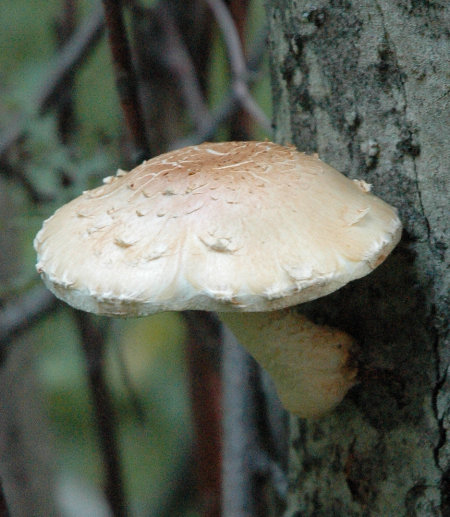
This mushroom is a sign that the poplar it's on is near the end of it's life. If near anything that matters, I'll take a tree like this down for firewood. Otherwise I'll leave it until it falls naturally. In the meantime, it may host a nest of woodpeckers, become a bug smorgasboard for chickadees and nuthatches. Nothing is wasted. My woodlot is the ultimate recycler.
Two of the five years have seen the shady forests covered with a short light green leaved plant with tiny, tiny white flowers. Have never identified it for sure. But some years it's there in abundance, and some years just barely there.
Still there are some things that are the same. We keep a calendar each year, and mark on it "first geese" "first sticking snow" and so on. Pond day is the spring day when the snow has melted enough that the ground's surface is saturated. Finally the water starts to run off. Our ephemeral stream has its fifteen minutes of fame, and overnight the pond fills up.
Got something to say? Email me: sfinfo@sherwoods-forests.com
Interesting? Share this page.
Want to talk right now? Call me: (8 am to 8 pm only, please) 1-780-848-2548
Do not arrive unannounced. Phone for an appointment. Why? See Contact & Hours That same page gives our hours of operation.
Back to Top
Copyright © 2008 - 2021 S. G. Botsford
Sherwood's Forests is located about 75 km southwest of Edmonton, Alberta. Please refer to the map on our Contact page for directions.
